
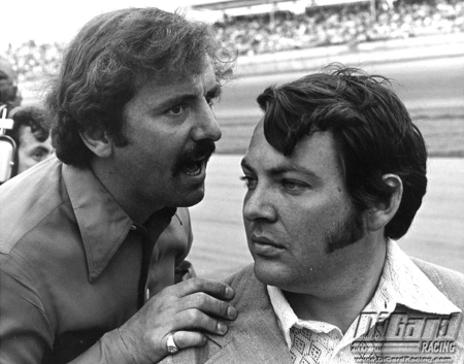
MIKE DIPROSPERO - 10/10/1941 - 9/15/2017
BILL GARDNER - ?/?/? -
DIGARD Racing - was formed by Mike DiProspero and Bill Gardner who were brothers-in-law. Shown in the photo at left DiProspero is on the left with Gardner on the right. At a time when motor sports was seen as a sport for southerners with participants that were not far removed from the rum runners/moonshiners, DiGard Racing entered the sport and put the wheels into motion that have helped turn NASCAR racing into a marketing platform that is virtually unrivaled in American sports. DiGard Racing fielded cars for such star drivers as Donnie Allison, Bobby Allison, Darrell Waltrip, Ricky Rudd and others. In addition to working with superstar drivers, the team also launched the careers of numerous other individuals in NASCAR, including team owner Robert Yates, former NASCAR Vice President of Research and Development Gary Nelson, NASCAR Vice President of Competition Robin Pemberton,
and 2004 NASCAR Cup Series champion crew chief Jimmy Fennig. The team was started in 1973 based in a garage near the Daytona speedway. The team fielded cars for Donnie Allison in 1973 and 1974 before replacing him with Darrell Waltrip in August 1975. Waltrip posted the team's first win in October 1975 at Richmond Fairgrounds Raceway. In 1976 the team negotiated with Stokely-Van Camp's and acquired Gatorade sponsorship, but after a 1976 season where they won just one race and fell out of over ten races, the team opened a shop in Charlotte, NC and closed down the Daytona shop; with closer access to parts suppliers the team became a consistent winner in 1977. Waltrip posted six wins in 1977, four of them on super speedways. He posted six more wins in 1978, but this time four of his wins came on short tracks. Waltrip became disenchanted with team ownership and publicly stated he would join the Ranier
Racing team then driven by Lennie Pond. To the surprise of the sport's followers, Waltrip signed a four-year contract with DiGard before the 1979 season. Waltrip nearly won the 1979 championship, coming in second and losing by 11 points to Richard Petty in the championship. Waltrip and DiGard had led for most of the season that year, leading the championship with a wide lead until the last few races. The impact of the loss angered Waltrip and his contract situation with the team became an issue again. Crew chief Buddy Parrott was fired at the end of 1979 but then rehired in 1980. Waltrip and Parrott won four of the 1980 season's first sixteen races but was fired in June; Parrott finished the season with the Ranier team. Looking to get out, Waltrip

set up his own contract buyout out of his own pocket to leave DiGard, landing at Junior Johnson Racing. Waltrip would win 26 times driving for DiGard. The #88 Gatorade car was driven by Ricky Rudd for 1981, garnering three pole positions that season. Rudd posted fourteen top five finishes but failed to win. Bobby Allison, who had been recruited by the team years before, joined the team in 1982. Allison took the controls of the DiGard Racing ride and made an immediate impact. He started off the season with a dominant win in the season’s most prestigious event, the Daytona 500 and the Busch Clash. In addition, Allison also picked up the win in the Firecracker 400, being the first driver to sweep the Busch Clash, Daytona 500, and Firecracker 400 in a single season. Allison ended the season with 8 wins,
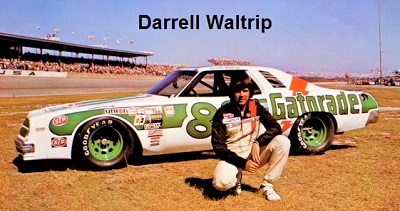
and finished second in the series championship standings. During this season Allison encountered the same money problems in the team that Waltrip had witnessed; he signed a new contract with DiGard; in large part thinking it would get him back payments the team had withheld during the season. For 1983, the Gatorade colors were to adorn a new Chevrolet Monte Carlo, but just before the season Miller High Life beer sponsorship joined the team and the car number was changed to #22. Gatorade and the #88 then switched to Cliff Stewart's Pontiac and driver Geoff Bodine. The following season the team created a new relationship with Miller Brewing Company, and Allison
continued to pick up checkered flags at an astonishing rate. Gone were the familiar green and white Gatorade colors, and in was the red and white Miller look. The Miller sponsorship was the first in NASCAR history to be valued at over $1 million annually. Bobby Allison collected six more wins, but more importantly, claimed the 1983 NASCAR Winston Cup Series championship. He began driving Chevrolets in the first three races; in March the team was denied access to the nose pieces for their Monte Carlos as the Junior Johnson team was given primary access to parts. The team switched back to the Buicks it had run the previous season. In all the #22 won six races in the 1983 season. But the team's finances continued to deteriorate. Insistent that the team look professional when they celebrated the series championship at the awards banquet in New York, team owners Bill and Jim Gardner had the team wear tuxedos,
becoming the first team to do so. Allison won twice in 1984 but the team was inconsistent; it involved supplying engines to the Curb Motorsports team driven by Richard Petty and the two teams were at loggerheads over provision of engines and payments; the team's deal with Curb ended after the 1984 Firecracker 400. The team entered a second car, for Greg Sacks, for the 1985 Firecracker 400; Sacks won the race, but the entry of two cars violated Allison's contract with the team. He left the team after the race and fielded cars out of his own race shop for the rest of the season. In 1985, DiGard had Bobby Allison battling for the Championship in the #22
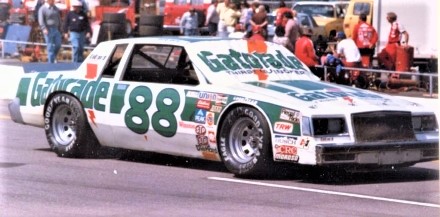
Ricky Rudd
Miller High Life car. For the Firecracker 400 at Daytona, DiGard set up and raced what is called a Research & Development car (a one-off unsponsored car numbered 10 entered to a race primarily for team improvement) with Greg Sacks at the helm. Instead of simply doing its intended purpose— running a small amount of laps and collecting data about the track that DiGard could use for Allison's car— Sacks drove the car to an unexpected victory. It was later alleged that the car sneaked through inspection with an oversize engine, and thus the team cheated. NASCAR did not find anything wrong with the #10 in post-race inspection, however, and Sacks' win stood. The impact of the R&D car's victory was significant. Reportedly angered that the team was focusing its attention elsewhere, Allison quit and Sacks
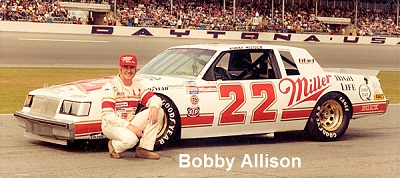
was hired to race for the rest of the year, but did not capture another Top-5 finish in 1985. Allison went on to drive for Stavola Brothers Racing and took the Miller sponsorship with him following the season. The allegations of cheating —combined with reported money troubles — shook the team, and some say imploded it. Bobby Allison left the team mid-season in 1985, engine builder Robert Yates left during the 1986 season, and the team ran a limited schedule and a myriad of with the #10 in post-race inspection, however, and Sacks' win stood. The impact of
the R&D car's victory was significant. Reportedly angered that the team was focusing its attention elsewhere, Allison quit and Sacks was hired to race for the rest of the year, but did not capture another Top-5 finish in 1985. Allison went on to drive for Stavola Brothers Racing and took the Miller sponsorship with him following the season. The allegations of cheating —combined with reported money troubles — shook the team, and some say imploded it. Bobby Allison left the team mid-season in 1985, engine builder Robert Yates left during the 1986 season, and the team ran a limited
schedule and a myriad of dozens of wins in support series such as the NASCAR Xfinity Series and ARCA Series. DiGard Racing pushed the envelope looking for new ideas that would improve performance on the track. DiGard Racing perfected the use of power steering in NASCAR race cars, developed shock absorber technology that improved handling characteristics, and made a concerted effort to use aerodynamics to lessen drag while giving down force, thus increasing overall speed. While many teams were reluctant to try new technologies for the fear they would fail and hurt their performance on the speedway, DiGard Racing built a better mousetrap by taking the next logical

Bobby Allison 1983 Southern 500 win
step: Gardner fielded a second car with the expressed purpose of being a research and development vehicle. The R&D car proved to be a good investment as it won its first race out of the box in Daytona with Greg Sacks as mentioned above. Gardner himself was no stranger to innovative ideas as he was one of the first racing spotters, perched above the race track with radio contact with the driver to warn of accidents ahead. The Gatorade sponsorship was the first national sponsorship by a non-automotive, consumer brand in NASCAR history, and it opened the door for other non-
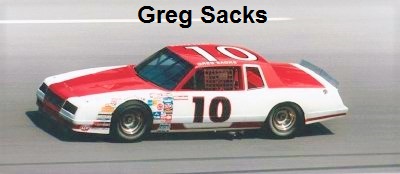
Last DiGard win - FireCracker 400 at Daytona 1985
traditional sponsors to follow. While Bill Gardner and the DiGard Racing team were seen as “outsiders” to the mainly southern participants while the team was active in competition, the legacy of the team is that of innovator and champion. The team's last NASCAR Winston Cup entry was in 1987 with Rodney Combs. For their time in Cup DiGard Racing won 43 events, including such major races as: World 600 (1978, 1979, 1984); Daytona 500 (1982); Southern 500 (1983).
All Photos copyright and are property of their respective owners
